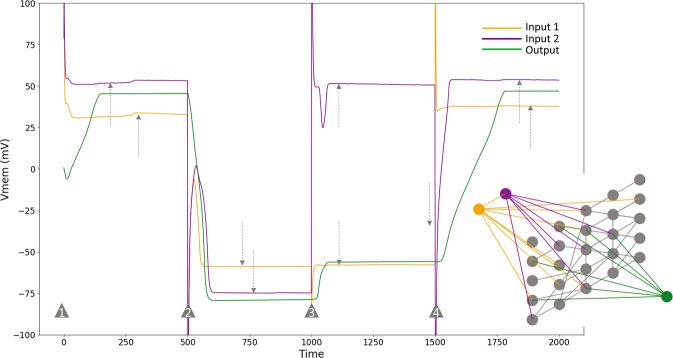Figure 4.
The structure and behavior of the best evolved tissue-level AND gate. Following the convention of the color-coding, orange and purple represent input nodes, while green represents the output node. Behavior correctly follows the AND rule (Fig. 2b). Inputs are transient: they are set (externally) to their respective states at the time steps marked by the grey triangles and then removed. As can be seen, they slightly oscillate for a small period of time after they are set initially, before dynamically fixing themselves (marked by grey dashed arrows) during every simulation. Thus, the network has evolved the capacity for memory: it remembers the inputs (at least their qualitative levels) even after they are removed. Inset shows the structure of the network.

